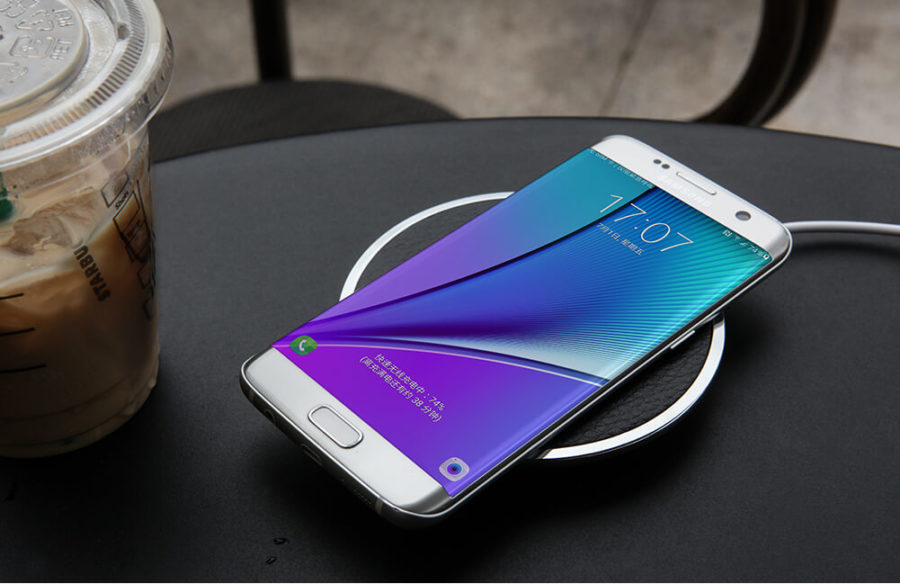Wireless charging for smartphones has recently entered our lives. They are currently only available for charging the flagship models of the iPhone, Samsung, Huawei. Cheaper phones cannot charge from them. What kind of charging is this and is it really going to replace standard wires in the near future? Let's get it right.

Content
How Wireless Charging Works
If your device was previously charged by an electric current that ran through the wires, then in wireless charging there is no contact between the current source - outlet - and the receiver, that is, the smartphone’s battery. From the course of physics, you probably know that the motion of electrons can be ordered by acting on it by an electric field. This principle was used to create wireless chargers.
The trick is that induction works well with gadgets whose case is made of glass. The glass surface perfectly passes the impulse through itself, allowing the battery of your gadget to charge. And the eraser cannot boast of such abilities. That is why most manufacturers have aimed at creating smartphones with a glass case.
Comparison of wired and wireless charging for smartphones
To begin with, the wire is still present in the induction charging device, but it does not reach for the gadget, but for the recharging base. This is not a power bank that you can take on a hike; here you need a constant current source. So, you still need the cable, although it does not have to be directly connected to the smartphone. Move on.
Charging speed
Since the induction field is much weaker compared to alternating current running through the wires, the charging time from the wireless station increases significantly. Note that the speed is affected by the presence of a cover on your gadget: if it is, recharging will stretch for an even longer time. In addition, overheating of the phone case is possible due to the case, which is fraught with a battery explosion, although this has not happened so far.
And if the smartphone is discharged during the day? This means that you will have to stay without it for several hours, because as soon as you remove it from the station, charging will stop. With a wired version, the phone, though limited, is mobile. You can use it: play, correspond, view news.
The convenience of use
Back to the night. As a rule, nobody uses an alarm clock anymore; they are replaced by those built into a smartphone. When the alarm melody plays in the morning, it’s sometimes difficult to find the gadget to turn off the sound. That was before the advent of wireless charging.
There are such induction stations on which the smartphone is not placed, but placed as in a stand. It is very convenient for use on the bedside table: you quickly find the device with your eyes, and you can disconnect the call with one touch. Here, the clear advantage is won by wireless charging.
Let's go further. In the car, the induction station simultaneously serves as a holder for the mobile phone. It's comfortable. But charging time is no good. Moreover, the wire from the base still takes the place of the cigarette lighter.Regular wire charging in this regard is much more convenient: you can talk, and the process is faster.
As for transportation, the cord can simply be put in your pocket. The cordless is a little bulky. A bag is better for him. But, lying at the bottom of the portfolio, some models simultaneously charge your smartphone while you get to work.
If guests came to you, it is better to provide them with a wired multi-charge with different types of inputs than to offer to recharge the smartphone from the induction field. After all, not every device has such an opportunity, and the created feeling of awkwardness will remain an unpleasant aftertaste on the soul of a dear guest.

In the dry residue
So what do we have? On the one hand, the wireless charger is charging the phone terribly slowly, it is bulky, not suitable for all devices and requires removing the case so that the gadget does not overheat. On the other hand, it is convenient at night, on the road, for reading news when you do not need to remove the device from the station.
It would be cool if the charging cable came from induction: he wouldn’t have a price! In the meantime, the price is much higher than that of a simple wire.